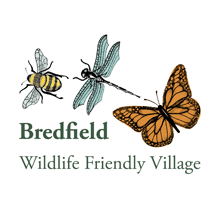Several types of tree have catkins – including Alder, White Willow and Silver Birch – but the earliest to appear in the year are the familiar golden-coloured Hazel catkins. Bunches of Hazel catkins, drooping from branch twigs, can be seen from January to March.
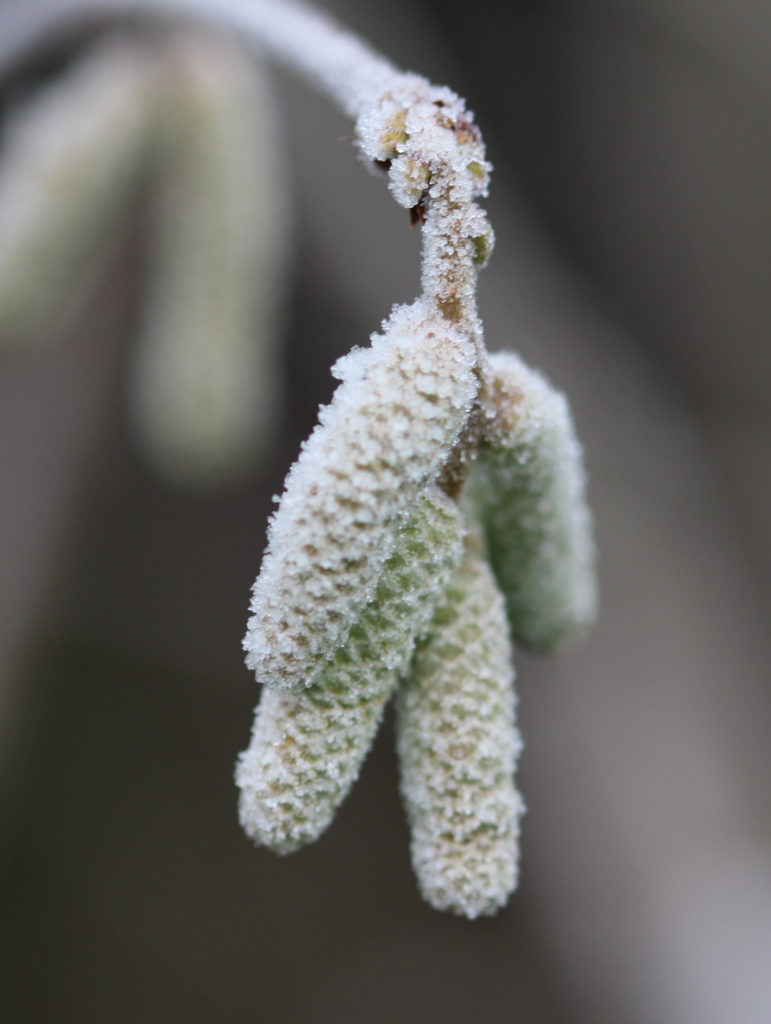
The catkins are the male flowers of the Hazel tree and, if you look very close, you should also find the tiny red filaments of the female flowers sticking out from a small bud.
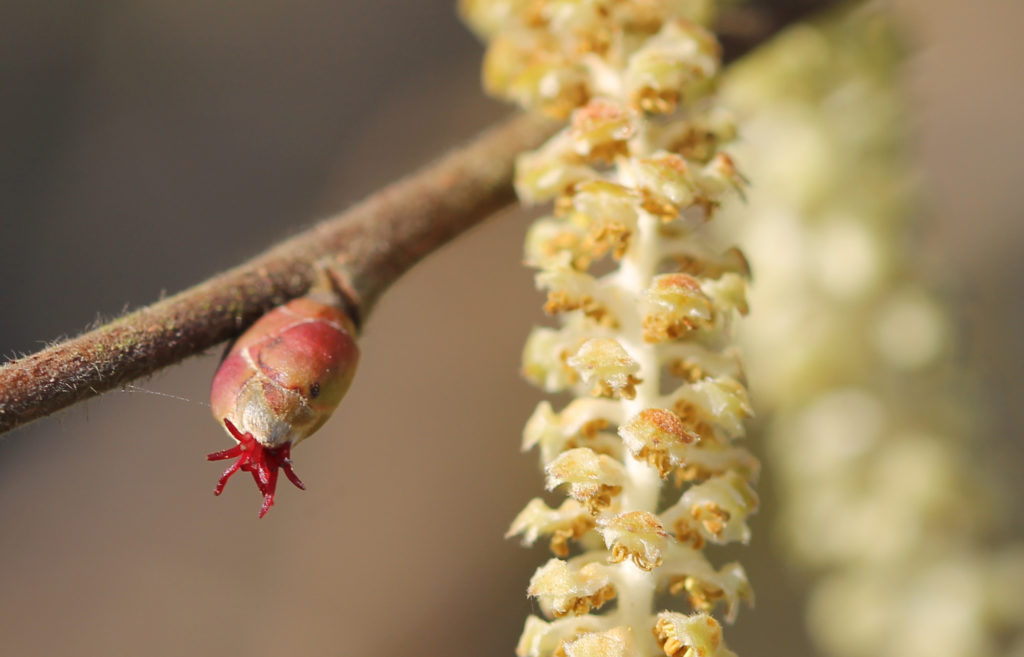
Pollen from the male flower is carried by the wind (though insects might sometimes lend a helping hand), hopefully finding its way to the female flowers on another tree. When pollinated, the female buds become the hazel nuts in autumn. Although male and female flowers are found on the same Hazel tree, they can’t self-fertilise.
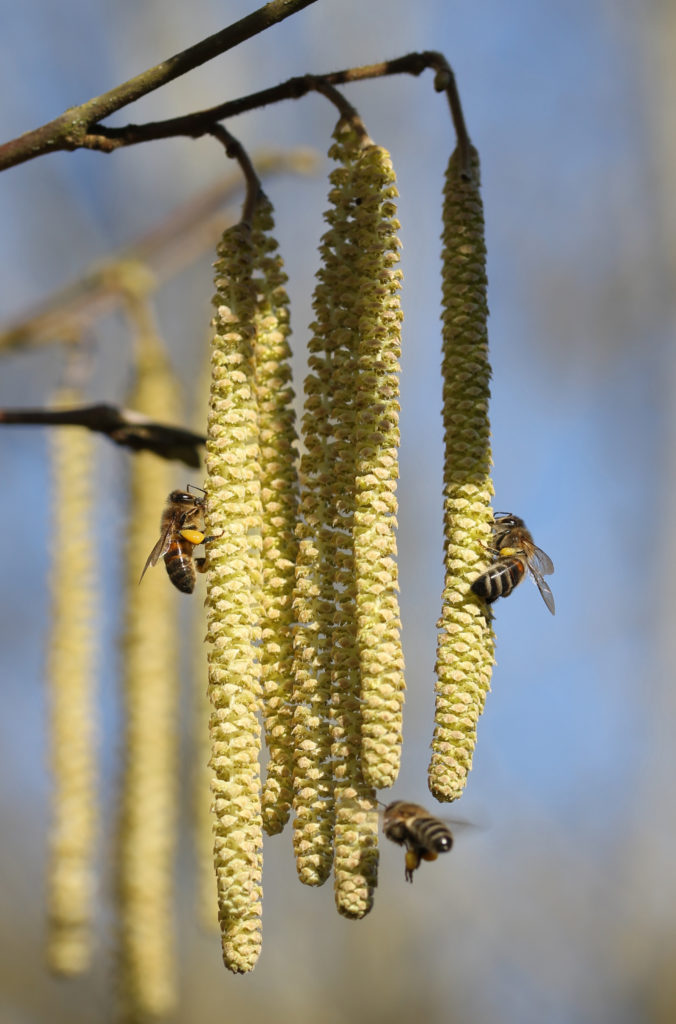
Though Hazel doesn’t require insects to pollinate, somebody forgot to tell Honey Bees. When bees emerge on a sunny day in late-February, there won’t be many flowers around, but there will be plenty of catkins. The tight cluster of flowers on the Hazel catkin can’t make them the easiest place for a bee to feed but, if needs must, there is pollen there for the taking.
There is one species of moth – the Nut Bud Moth which relies on Hazel catkins. The larvae feed in the catkins and buds and later pupate in a cocoon on the ground below the tree. They are ‘micro-moths’: common in Suffolk, but difficult to see.
By the time the leaves appear on Hazel trees, their golden catkins will have long gone. The tree continues to be wildlife-friendly: the fallen leaves are food for the larvae of moths such as Large and Little Emeralds; and the autumnal nuts are food source for a range of mammals and birds, including Great Spotted Woodpecker.
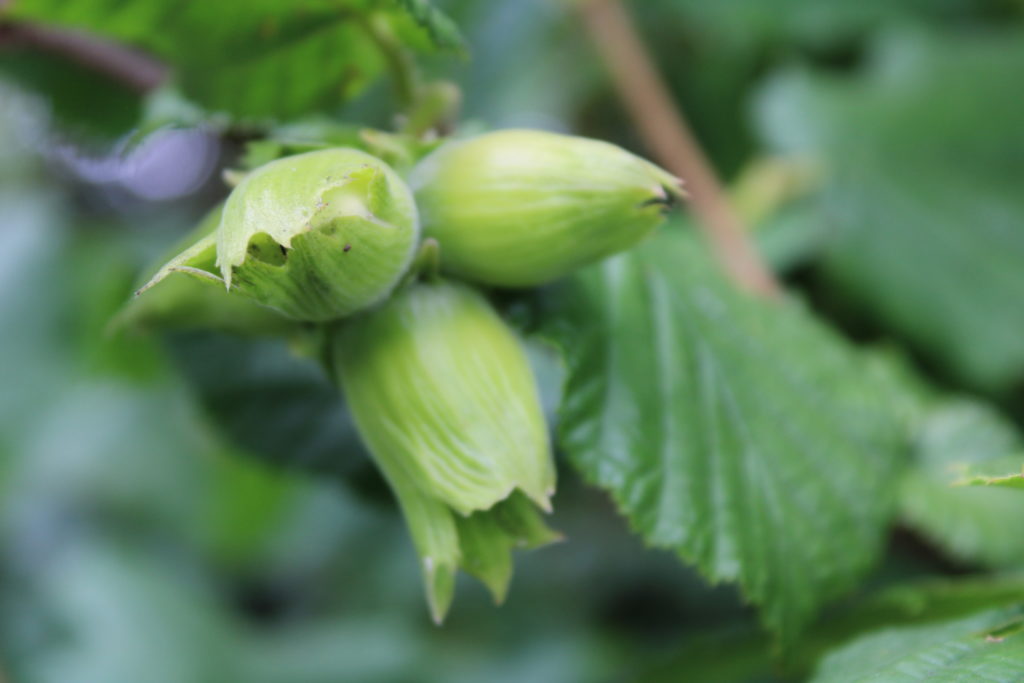
Hazel nuts
Lastly, why the name ‘catkin’? The name comes from the middle Dutch word ‘katteken’, meaning kitten. More locally, Hazel catkins are called ‘lambs tails’. Catkins hang down (like the tails of lambs), not up (like the tails of kittens), so perhaps they should have been named after sheep, not cats.
